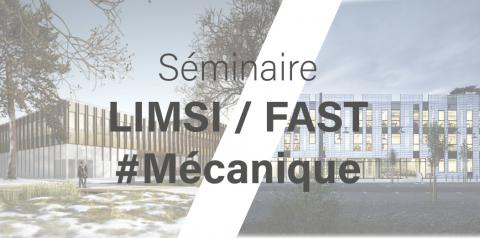
Séminaire de mécanique
Early embryos are shaped via a series of cell divisions, shape changes and rearrangements leading generally to a stereotypical blastula structure before gastrulation. I will summarize our recent analysis and modeling efforts to decipher the self-organizing principles of the mouse embryo morphogenesis, combining 3D numerical simulations with simple concepts of soft-matter physics (1-3). Pre-implantation mammalian embryogenesis leads to the blastocyst, a structure composed of an epithelial layer surrounding an inner mass of cells and a fluid-filled cavity. In a collaborative efforts with biologists, we demonstrated in the past years that differential changes in cell surface tensions are sufficient to drive the process of compaction at 8-cell stage (1) and the formation of the inner-cell mass at the 8-to-16 cells transition (2). Here I will focus on the formation and positioning of the blastocoel cavity after the 32-cell stage. I will present our recent results demonstrating that the blastocoel forms by hydraulic fracturing of cell-cell contacts into hundreds of microlumens, which then coarsen into a single cavity though hydro-osmotic luminal fluid exchange (3).
Détails : https://semmeca.limsi.fr/affiche/20200220\_14.html
Bâtiment 530 - rue André Riviere - OrsayEarly embryos are shaped via a series of cell divisions, shape changes and rearrangements leading generally to a stereotypical blastula structure before gastrulation. I will summarize our recent analysis and modeling efforts to decipher the self-organizing principles of the mouse embryo morphogenesis, combining 3D numerical simulations with simple concepts of soft-matter physics (1-3). Pre-implantation mammalian embryogenesis leads to the blastocyst, a structure composed of an epithelial layer surrounding an inner mass of cells and a fluid-filled cavity. In a collaborative efforts with biologists, we demonstrated in the past years that differential changes in cell surface tensions are sufficient to drive the process of compaction at 8-cell stage (1) and the formation of the inner-cell mass at the 8-to-16 cells transition (2). Here I will focus on the formation and positioning of the blastocoel cavity after the 32-cell stage. I will present our recent results demonstrating that the blastocoel forms by hydraulic fracturing of cell-cell contacts into hundreds of microlumens, which then coarsen into a single cavity though hydro-osmotic luminal fluid exchange (3).
Détails : https://semmeca.limsi.fr/affiche/20200220\_14.html
